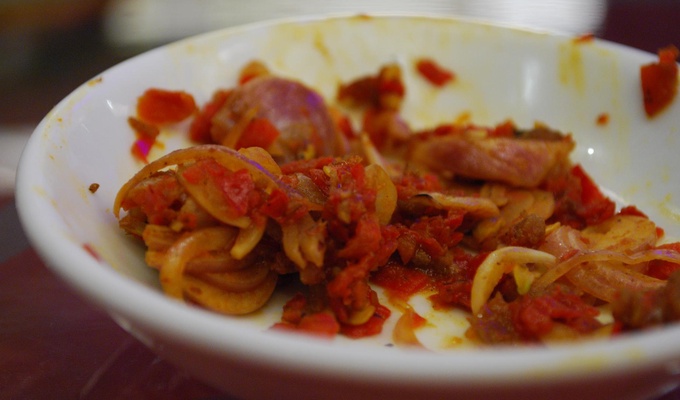Cincalok is a Malay dish that originated in Malacca, Malaysia, consumed by Malay, Peranakan and Kristang. It can trace it origin during Portuguese occupation of Malacca. In Malacca, the shrimp is called udang geragau. This dish made up of fermented small shrimps or krill. It is usually served as a condiment together with chillis, shallots and lime juice. The shrimp in the pinkish coloured cincalok are readily identifiable and the taste is salty. Sir R. O. Winstedt has written about "Cencaluk" in Malaysia in his book "The Circumstances of Malay Life - 1909". This shrimp is available in particular season in Pantai Klebang, Limbongan, Tanjung Kling and several coastal areas.
Nowadays, cencaluk making enterprises are gaining ground among the residents in several areas in the state of Melaka. The state government itself has designated the State Legislative Assembly constituency Sungai Udang as the area to produce cencaluk in the 'Satu DUN Satu Produk' plan.
Apart from that, cencaluk is also now easily available through open sales such as by the roadside and in the markets around the state. For those who pass the shores of Tanjung Kling to Sungai Udang, you will definitely be able to see a row of stalls selling cencaluk and belacan.
The consumption of cincalok has also spread to Riau and West Kalimantan in Indonesia. It is similar to bagoong alamang (see shrimp paste) in the Philippines and khoei chalu (Thai: เคยฉลู) in Thailand.
